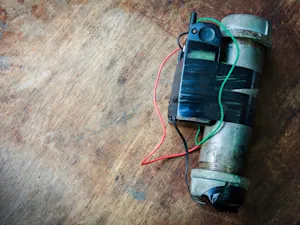
5 Ways to Protect Yourself From 'Quick Change' Scam
The "Quick Change" Scam is a notorious trick that targets inexperienced storefront cashiers. It's a fast-talking scam where a scammer confuses the cashier, resulting in the cashier returning more money than owed. Here's how to protect yourself from falling victim to this clever ploy.
What Is a 'Quick Change' Scam
The "Quick Change" Scam operates by overwhelming the cashier with rapid requests for change, which can lead to errors. Scammers typically hand over a large bill, ask for change, and then repeatedly ask for different denominations or reverse the transaction until the cashier is confused. The goal is to create enough distraction that the cashier ends up giving back more than what is correct. These scams are usually executed in busy environments, like retail stores, where cashiers are in a rush.
Here's how to not fall victim to these types of scams.
1. Stay Calm and Focused During Transactions
One of the primary defenses against a "Quick Change" scam is to remain calm and focused, regardless of how rushed or confused a customer may seem. Scammers rely on causing confusion and a sense of urgency to trick cashiers into making errors. It's important to take your time, verify every step of the transaction, and avoid letting a hurried customer pressure you.
2. Handle One Transaction at a Time
If a customer requests multiple change transactions, handle them one at a time. Complete one request fully before moving on to the next. Scammers often try to overwhelm you by requesting numerous changes in rapid succession, which is designed to make you lose track of how much money has changed hands.
3. Be Cautious With Large Bills
"Quick Change" scammers frequently use large bills to make the situation seem more complicated than it is. Whenever you are given a large bill, handle it with extra care. Immediately place the bill on top of the register and announce the amount to avoid confusion and count the change back to the customer clearly and methodically. If the scammer changes their mind about the transaction, do not give their large bill back until you receive the full change back in your hand. If you feel unsure, take the time to double-check the math or ask another cashier to help you. Scammers rely on haste to trick you, but by slowing down, you can prevent mistakes.
4. Double Check the Original Transaction
Once a scammer successfully confuses a cashier, they may attempt to reverse or change the transaction in such a way that the cashier forgets the original amount handed over. To protect yourself, always confirm the original amount of money you received from the customer before making any further changes. Avoid letting the customer manipulate the narrative of the transaction and refer back to the original amount as a safeguard.
5. Put a Limit on the Bills You Can Accept
One effective way to protect yourself or your business from a "Quick Change" scam is to set a limit on the bills you accept, such as restricting cash transactions to $20 bills or smaller. When a customer attempts to pay with a larger bill, politely hand it back and explain that you are unable to accept anything higher. This not only limits the opportunity for scammers to create confusion with large sums of money but also provides an easy way to ensure that you maintain control over the transaction. By enforcing this policy, you reduce the risk of being targeted by quick change artists, who often use large bills to increase the chances of error.
Stay Protected
The "Quick Change" scam is one of many tricks that rely on distraction and confusion. By staying calm, double-checking each transaction, and being cautious with large sums, you can protect yourself from falling victim to this clever scam.
References: What's the Quick Change Scam and How Do I Protect Myself From It? | How to Protect Your Business From Quick Change Artist Scams























